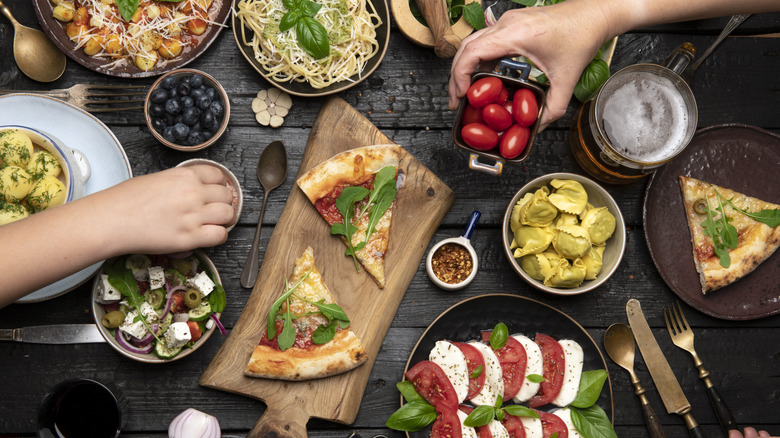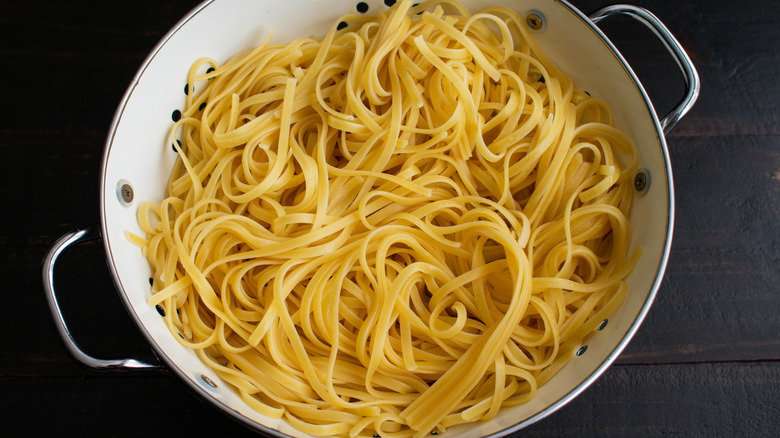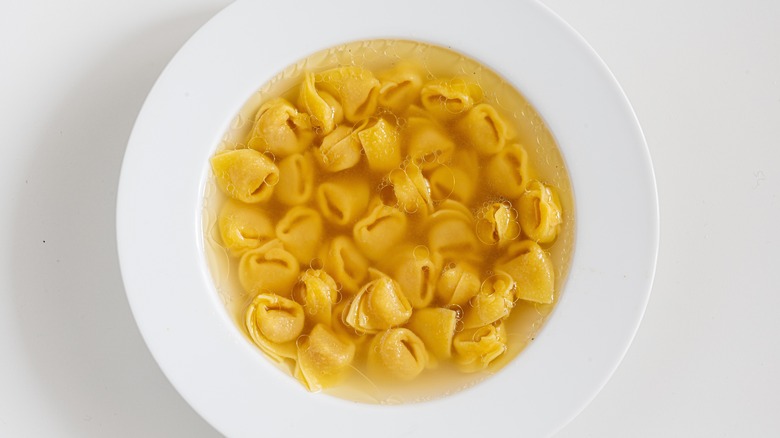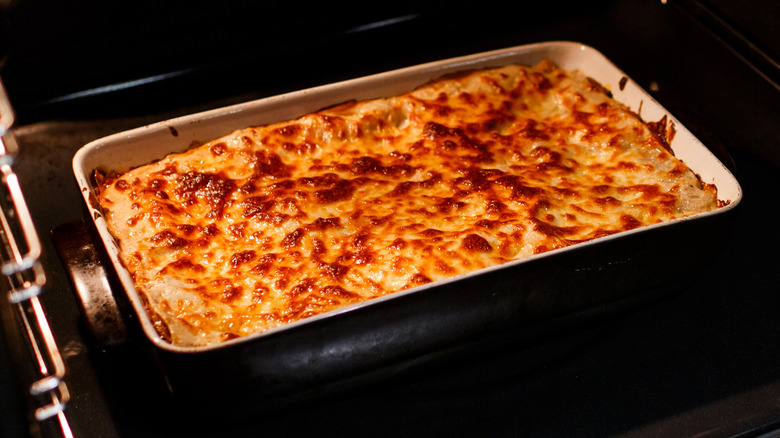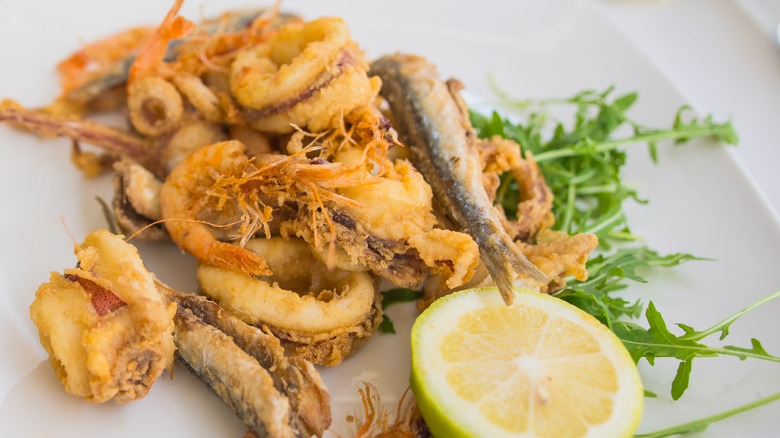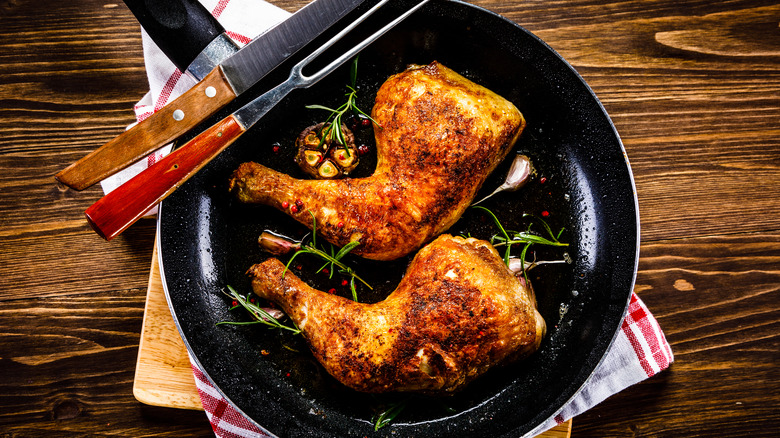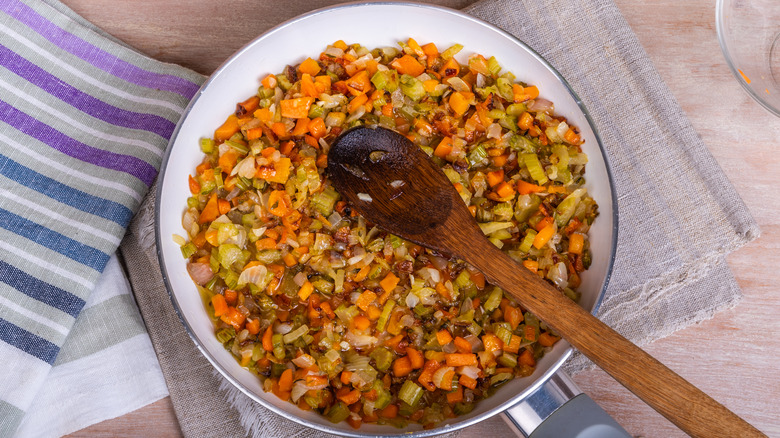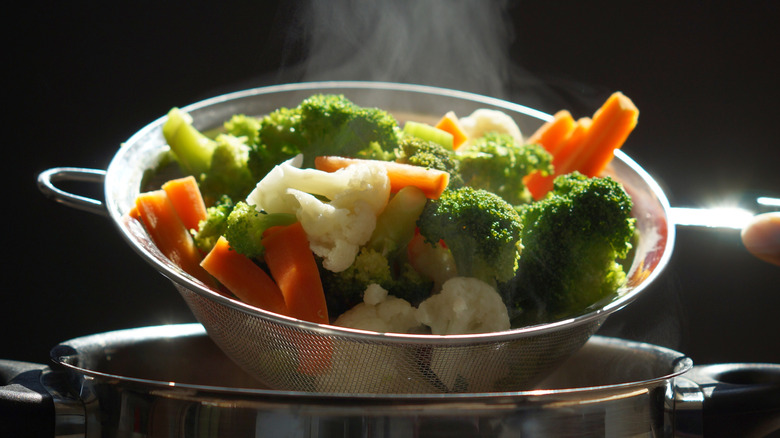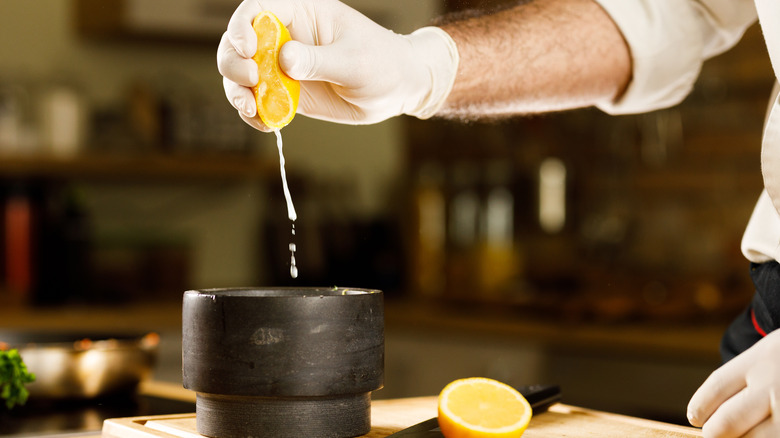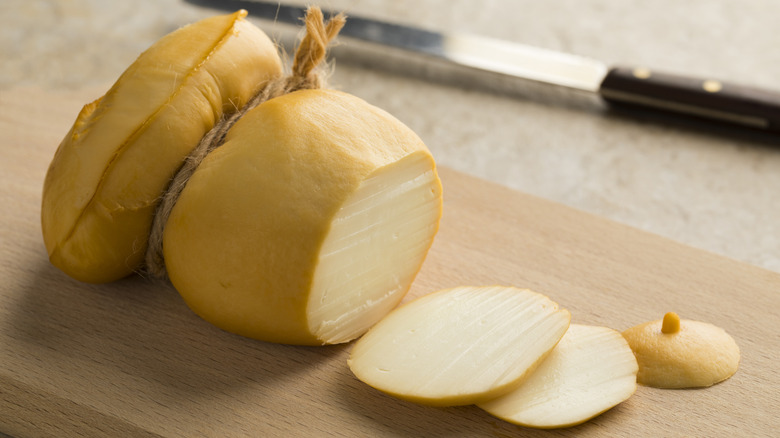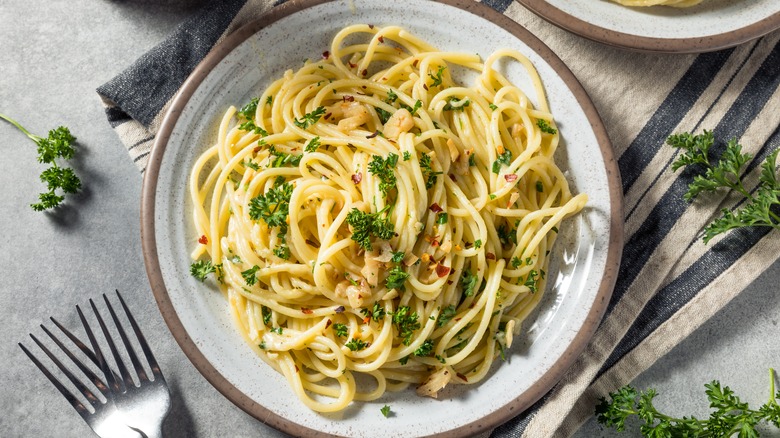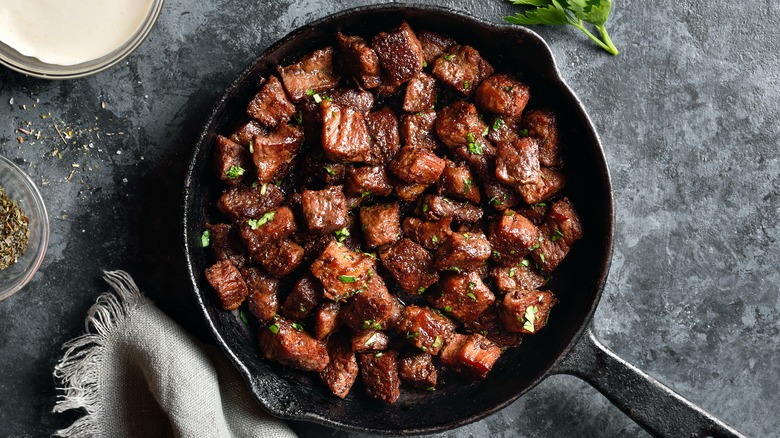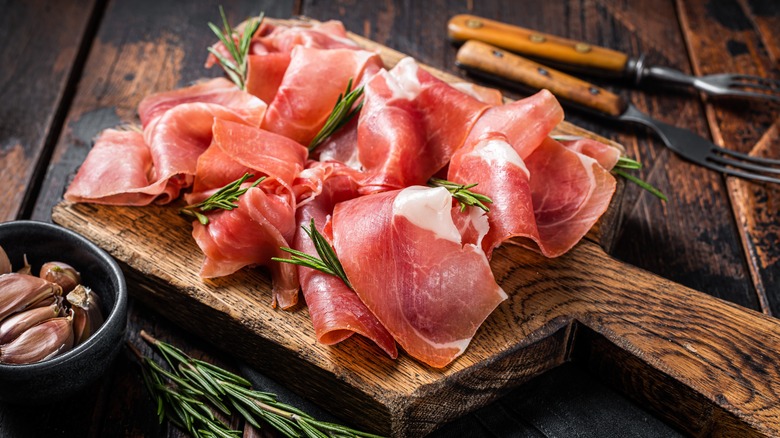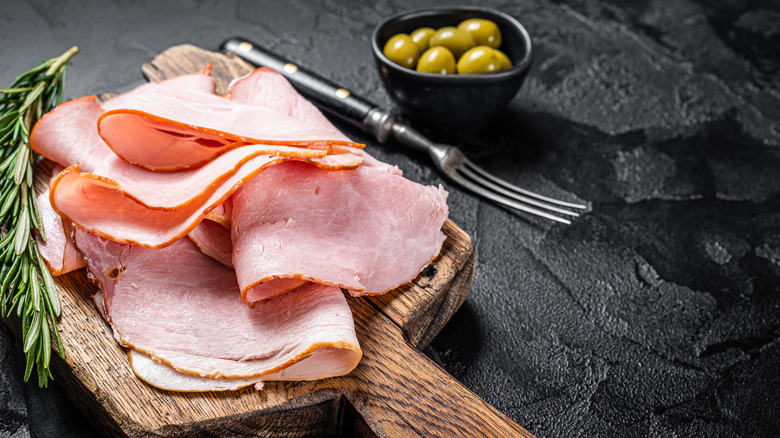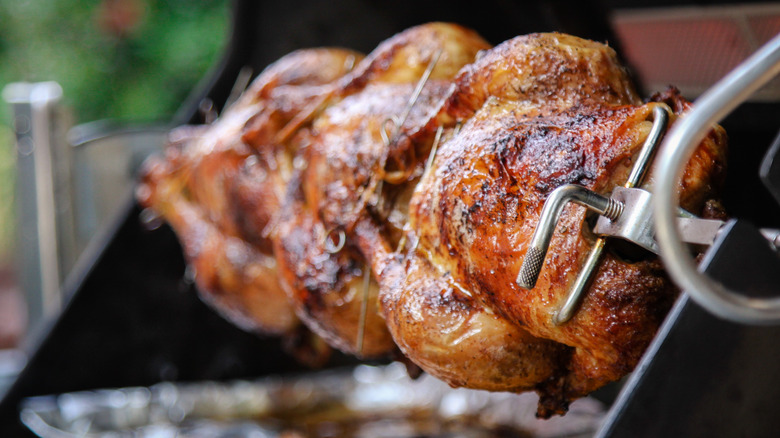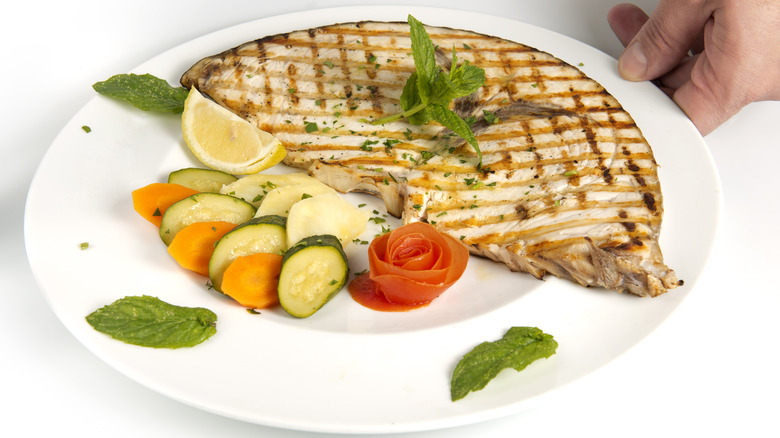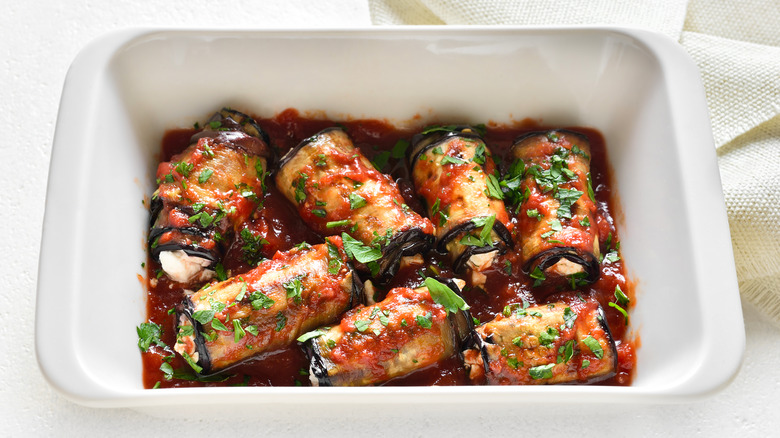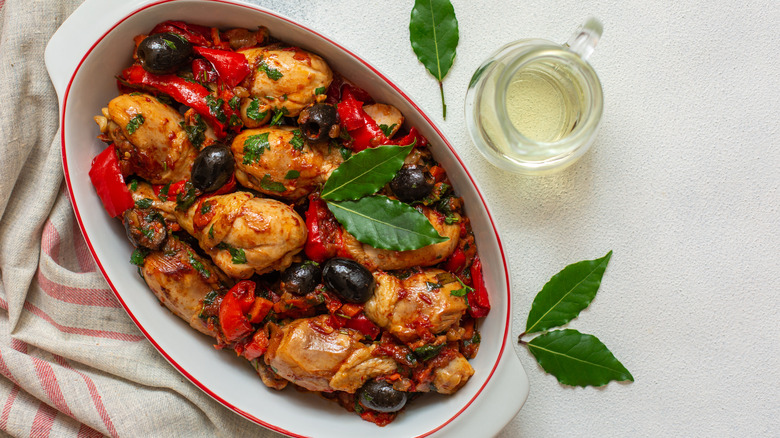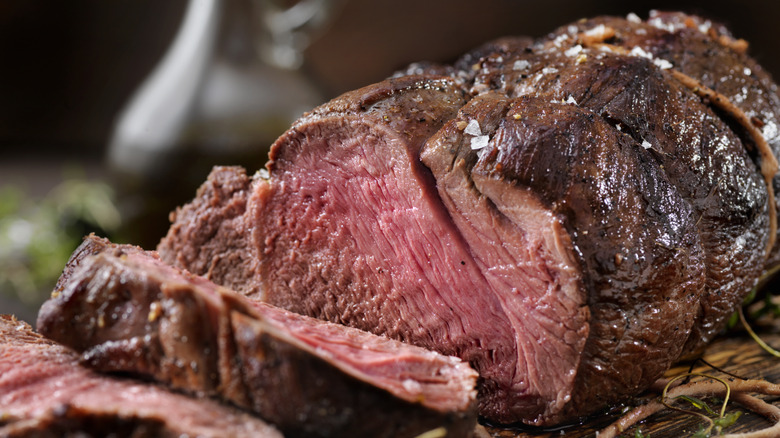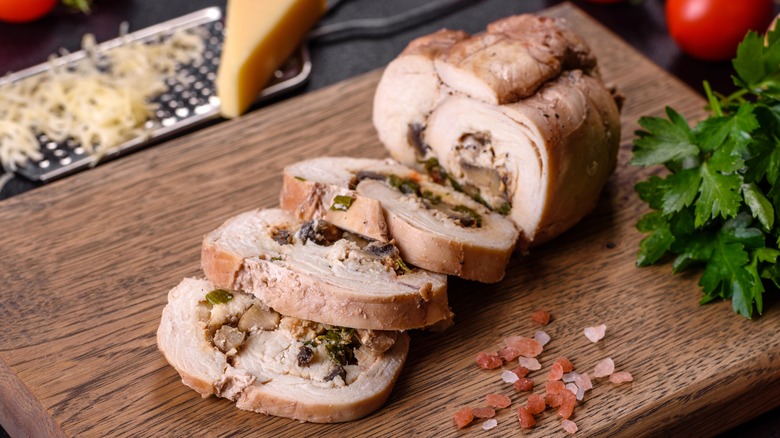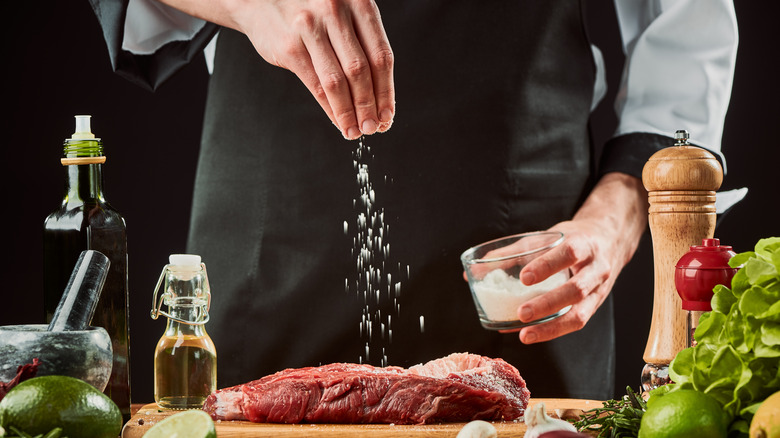21 Essential Italian Cooking Terms You Should Know
Italian food is among the most popular cuisines in the world, filled with regional specialties and classics that cross borders, like pizza, pasta, and gelato. Whether your favorite night out involves an Italian restaurant or you love poring over cookbooks to recreate traditional dishes, you've likely picked up a few words from the Romance language along the way.
You could turn your linguistic knowledge into a fun party trick or you might choose to branch out and expand your grasp of Italian cooking terms. After all, there are several words that can help you speed through recipes and menus without stopping to try to understand the Italian descriptors. Oftentimes, they refer to the way an ingredient is cooked, served, or garnished, so learning several important terms can eliminate some of the mystery.
Although our compilation could be extended as you widen your repertoire, it will offer you a solid foundation to advance your cooking journey. Discover the essential terms you'll want to know to improve your Italian cooking game, while slowly picking up a new language in the process.
1. Al dente
Possibly the most common Italian term stateside, "al dente" is primarily used to refer to the doneness of pasta. The term translates as "to the tooth" and describes the way the starches in cooked pasta should feel as you take a bite. Al dente can also be used with regard to rice; for example, a classic risotto should retain some firmness instead of being a soupy mush.
Whether you're making pasta or rice, neither should be cooked until soft nor so hard and chalky that it is clearly not yet done. Of course, attaining the perfect consistency is a bit of an art. It's all too easy to cook pasta or rice one minute past al dente. Be sure to taste test for texture a couple of minutes before the end of the suggested cooking time — it should be just about al dente at this point.
2. In brodo
Translated as "in broth," "in brodo" is a style of serving certain dishes with some broth. Compared with ordinary stock, brodo is a bit thinner and made with meat (mainly beef and chicken), bones, aromatics, and herbs. The result is simultaneously light and rich and perfect to serve alongside heartier foods for extra flavor.
While you may enjoy a plate of tortellini loaded up with your favorite red sauce, in the province of Emilia-Romagna (one of Italy's epicenters of gastronomy), the stuffed pasta is served in a clear broth. This combination highlights the tortellini filling while maintaining the moisture and savoriness of the pasta (fresh Parmesan helps, too). You'll also come across simple soups that showcase the broth along with chunks of vegetables and meat.
3. Al forno
As the largest piece of equipment in most kitchens, the "forno" (or oven) is essential for the success of many recipes. When a dish is baked in the oven, you'll find it described as being "al forno." While wood-fired ovens add their own touch, pretty much anything baked in an oven can carry the label: meat, vegetables, pasta, and so on.
In Southern Italy, baked pasta dishes are a favorite thanks to the abundance of wood-fired ovens. If you're looking for a low-maintenance meal to satiate a large group of people, pasta baked in a casserole with sauce, cheese, and other goodies is an obvious contender. Lasagne al forno is perhaps the most famous recipe in the U.S. and with good reason.
4. Fritto
Even Italian cuisine contains some tried and true fried specialties to complement traditional meals. "Fritto" is the term to describe something that is fried, and it comes up in a range of fun recipes, each with its own regional flair. The Romans picked up the tasty preparation early on, and cooking food in hot oil or lard has long been standard practice across Italian society.
Nowadays, it's common to find fried snacks sold as street food or as appetizers at pizzerias. Fritto misto is one popular preparation, made with assorted fried items such as seafood and vegetables that vary depending on the area. Other regional favorites include zucchini flowers stuffed with cheese and anchovies, olives stuffed with minced meat, salted cod, or arancini (breaded balls of risotto).
5. In padella
If you're looking for a quick meal to prepare on the stovetop, check your Italian cookbook for a recipe made "in padella," or "in a pan." The description merely refers to the cooking method, as you can make a wide variety of items following this simple method. Simply seasoned or garnished with herbs and spices, you can do a lot with a stovetop and pan.
Cooking food in a pan is an easy way to get dinner on the table fast, which makes it an excellent candidate for weeknights or a quick stop at a restaurant. Plus, it's incredibly versatile; vegetables like zucchini, eggplant, and artichokes are sauteed in a hot pan until browned. Parboiled potatoes, frittatas, thin slices of meat, and fish fillets all benefit from the basic cooking process too.
6. Soffritto
A number of cuisines identify a few key ingredients as the base of many sauces and recipes, and in Italy, "soffritto" is the result. The foundational component is typically made with a combination of minced onions, celery, and carrots, cooked slowly at low heat in a pan with oil. The vegetables soften and release aromas as they brown, infusing the final dish with layers of flavor.
You'll find soffritto at the start of classic recipes like minestrone, pasta sauce, risotto, stews, and braised meat dishes. While the three-ingredient base is standard, regional variations with assorted seasonings like garlic, herbs, or pancetta are also common. "Soffritto" is not to be confused with "sofrito," which is usually made with bell peppers, garlic, and tomato paste.
7. Al vapore
You might not associate steaming with Italian cooking, but this simple method is a common way to prepare vegetables, among other foods. "Al vapore" refers to this basic procedure, which is commonly praised for its healthy attributes. By only using the heat of the steam produced from the boiling water beneath the basket containing the food, more nutrients are typically retained (via Healthline).
In Italy, vegetables are often steamed, then lightly seasoned with olive oil and salt at the table. Artichokes, mixed greens, cabbage, and various brassicas are some of the typical candidates. Mussels and clams often get this treatment too and are generally steamed in a combination of cream, stock, or wine. Delicate white fish can also benefit from this gentle cooking method.
8. All'agro
This basic cooking term involves preparing food with specific ingredients to infuse flavor. "Agro" directly translates to bitter or pungent, but when it comes to food preparation it refers to the addition of lemon or vinegar. These ingredients add an extra punch of sharp flavor to any dish. Depending on the recipe, the food can be marinated, pickled, or cooked in a mix of lemon, vinegar, water, and other seasonings.
Common foods that receive the all'agro treatment include a wide assortment of vegetables; asparagus, spinach, broccoli, onions, and celery are some examples. Beef, pork, chicken, shrimp, and fish can all be cooked with vinegar or lemon too, tenderizing the protein in the process. These simple recipes offer a touch of flavor without overpowering the main ingredient.
9. Affumicato
Smoking food immediately adds tons of flavor and can have an impact on the texture too. In Italy, meat, fish, and cheese are prime candidates for this cooking method. Salmone affumicato (smoked salmon) is a popular example, commonly added to pasta dishes with green vegetables and a light cream-based sauce. Similarly, smoked trout is a local favorite for many and was awarded a distinction as a Top Italian Food by Gambero Rosso International, a renowned food and wine magazine.
Other favorites include panuzzu or scamorza affumicata, two types of cow's milk cheese that are smoked. Enjoyed alone or on pizza, the smoky element adds a rich nuance to these cheeses. Whereas many famous Italian charcuterie products are simply cured, speck from the northern region of Alto Adige is lightly smoked.
10. Aglio e olio
There's something to be said about simplicity, and aglio e olio is the peak expression of it. Italian for "garlic and oil," this ingredient duo provides layers of flavor with minimal effort. The seasoning profile is most commonly associated with spaghetti, proving that pasta really doesn't need much to be delicious. The original rendition of spaghetti aglio e olio can be traced back to Naples, though variations from surrounding regions are abundant. One common twist adds a sprinkling of pepperoncino (or chili flakes) for a bit of heat.
Using fresh garlic and high-quality extra virgin olive oil provides all the flavor you need for a hearty bowl of pasta. You can garnish other dishes such as steamed vegetables with the same ingredients, though the oil-based dressing is ideal for coating long strands of pasta. A splash of pasta water amplifies the effect, resulting in a tasty meal made from simple pantry ingredients.
11. Bocconcini
Not to be confused with the small orbs of fresh mozzarella, bocconcini extends beyond this dairy delight. The term is the diminutive of the word "boccone" which means a mouthful; consequently, bocconcini means small mouthfuls. While bite-sized pieces of cheese are one example, bocconcini of meat like veal or beef are common as well.
Considering the small format is pretty much the equivalent of stewing meat, bocconcini are usually cooked in a stew called "spezzatino." Typically made with small leftover pieces of meat, the dish is slow-cooked for a couple of hours with ingredients like potatoes, vegetables, and seasonings, to create a rich hearty stew worthy of a midday Sunday meal. Meanwhile, if you're referring to fresh mozzarella, the cheese is regularly added to salads, sandwiches, and most famously, to Caprese salads with tomato slices and basil.
12. Crudo
Translated as "raw," "crudo" can refer to the state of an ingredient or its final preparation in a dish. Naturally, it's a simple cooking method that primarily requires good knife skills and no heat. It is an important descriptor when it comes to prosciutto (or ham), for example. The classic seasoned and dry-aged version you'll find on a charcuterie board is prosciutto crudo.
It's very common to come across seafood served crudo style in coastal Italian restaurants; culinary origins aside, it's not dissimilar to sashimi. Fish crudo is often served with a drizzle of olive oil, lemon juice, and sea salt — no soy sauce in sight. High-quality fish is obviously paramount, and assorted types of oils or fresh herbs can be added for seasoning.
13. Cotto
As the opposite of the term "crudo," "cotto" describes food that is cooked. That being said, the range is wide as the cooking method can vary. Whereas prosciutto crudo is simply cured, prosciutto cotto is slow-cooked to tender perfection, then sliced into thin pieces that differ from ordinary deli ham.
Another popular recipe that carries the label is panna cotta. Since "cotto" is an adjective, it takes on the feminine gender with the word "panna," and becomes "cotta." This classic dessert is made by cooking cream (panna) with sugar, adding a type of gelatin, and cooling it until it sets. Vino cotto is another sweet treat made by cooking must (grape juice with skins and seeds) until it becomes a thick syrup used to garnish desserts.
14. Allo spiedo
If you're a fan of rotisserie chicken, you'll want to be sure to remember "allo spiedo" for your next trip to Italy. Translated to mean "on a spit," this cooking term typically refers to roasting meat on a stick. Granted, it is a slow process, but it infuses the meat with smoky flavors while simultaneously softening the proteins so that the final result is delightfully tender.
While chicken is a popular option, a range of meats can be prepared in this manner. Most commonly, this method is used to roast a whole animal, so rabbit, baby goat, suckling pig, and lamb are all candidates. Meanwhile, in coastal regions, eel are often skewered and cooked over fire. You don't need a giant spit for this preparation either; skewered foods are also roasted "allo spiedo."
15. Alla griglia
For a reliably tasty meal, select meat or vegetables cooked "alla griglia," or on the grill. As an easy and direct way to cook food fast, grilling is efficient and doesn't call for much fat, making it a healthier choice in some respects. This term can encompass grilling on a griddle or broiling food with a source of overhead heat. In the former case, the method can also be called "alla brace," referring to the embers, "alla piastra," or "ai ferri."
Simple cuts of meat and whole fish that don't require lengthy cooking times to be tenderized are excellent options for grilling. Also, tossing vegetables on a griddle adds just the right amount of char to infuse them with flavor, making them instantly more desirable to even the vegetable-averse. A drizzle of olive oil and salt are all the seasonings you need.
16. Involtini
"Involtini" basically describes small packages of food and comes from the word "involto," which means wrapping. The little bundles are typically made by rolling up a thin piece of meat or vegetable with a filling, creating a tubular-shaped pouch loaded with flavor. In Southern Italy, a similar preparation called "braciole" is made with larger pieces of meat, such as a whole pork loin.
When it comes to involtini, slices of grilled eggplant, zucchini, fish, veal, or beef are commonly used to contain the assorted stuffing, which often includes ingredients like cheese, prosciutto, nuts, and breadcrumbs. In some cases, involtini are served as small bite-sized appetizers, whereas in other recipes, they can be placed in a casserole dish and further cooked in sauce. Alternatively, they can be breaded and fried for a heartier take.
17. Alla cacciatora
"Alla cacciatora" refers to a meat stew cooked with a sauce containing mushrooms, tomatoes, herbs, onions, and wine. Other add-ins like carrots, bell peppers, and celery can also be used to bulk up the stew. This style of dish gets its name from hunters, as "cacciatore" is the Italian word for hunter. The first known recipe dates back to the 16th century, demonstrating the long-standing popularity of this easy preparation.
Chicken cacciatore is a popular dish stateside, but the base recipe can be made with various proteins. In fact, chicken is one of the most basic options you can choose to prepare in this manner. Meats such as rabbit, turkey, fowl, lamb, and pork can all be cooked with the classic assortment of cacciatore ingredients too.
18. Casalinga
If you come across a menu or restaurant advertising cooking that is "casalinga," it can be a sign you're about to have a great meal. The term is used to describe something as being homey, home-style, and homemade — or a housewife outside of the context of food. Whatever your feelings about household gender roles, casalinga cuisine is always a good thing.
This cooking style usually prioritizes local seasonal ingredients and a slower pace of preparation. While dishes prepared in someone's home are most likely to be homemade, look for the term when picking up bread, cured meats, fresh pasta, pizzas, and assorted treats. Whether you're reading a menu or the label of a packaged product, it offers additional detail about the quality standards.
19. Arrosto
What is "arrosto"? Well, it doesn't sound too far off the English word, and indeed, it means "roast." Whether you're roasting a large piece of meat or a tray of vegetables, the result is described as arrosto. Due to the number of servings and the lengthy cooking time, large meat roasts are often prepared for a midday Sunday family meal.
Meanwhile, roast vegetables are an easy side dish that simply shows off the fresh seasonal produce. Served whole with roast meat or chopped up and added to a pasta dish, they're always a hit. A great roast depends on the seasonings added to flavor the meat, and in Italy a range of classic herbs like rosemary, oregano, parsley, sage, and thyme are common, as well as plenty of salt.
20. Ripieno
Translated as stuffing or filling, "ripieno" can be used to describe a food that is stuffed, as well as the stuffing itself. For example, the filling for involtini is referred to as the "ripieno." Regional specialties abound, and the options for fillings and the vessels to contain them are seemingly limitless.
Seasonal ingredients are commonly incorporated into recipes, such as fried zucchini flowers filled with cheese and anchovies or beefsteak tomatoes filled with a mixture of rice and ground beef. Other popular dishes include Sicilian cannolis filled with sweet ricotta, tortellini and ravioli bursting with meat or vegetable fillings, calamari with vegetables, eggplant, zucchini, or bell peppers with ground meat and sauce ... there really is no end to what can constitute this preparation.
21. Quanto basta
If you're used to working with your trusty set of teaspoons and tablespoons, you might be perplexed to see units of measurement listed as "quanto basta" or q.b. The direct translation is "just enough" or "as much as needed," which in the kitchen can depend entirely on the cook. Therefore, consider this term to mean "to taste."
Ultimately, this offers both instruction and encouragement to expand your culinary horizons. Instead of pinpointing specific quantities down to the fraction of a teaspoon, many Italian recipes are more fluid and place responsibility on the cook to make decisions. Perhaps your tomatoes are more watery than the previous time you prepared a recipe, requiring slightly more seasoning this time. Be sure to taste your dish and season it as you go, to avoid having to catch up once you're ready to serve it.
